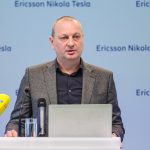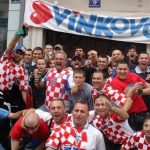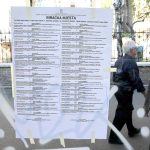Another troubled year for Croatian politics. TCN’s year in review of Croatian politics on December 27, 2017.
Unlike 2016, which brought us as many as three different prime ministers, there were no parliamentary elections in 2017, but that does not mean there were no dramatic moments. We entered the year with a small dose of optimism that the newly-elected government might devote itself to serious economic reforms, but the exact opposite took place. At the end of 2017, Croatia seems to be in worse shape than at any other time since at least 2000, with no one but the government expecting any major breakthroughs in the foreseeable future.
If you want to refresh your memory about events which led us to the beginning of this year, you can read our 2016 political review here.
This year began with disagreements between the ruling coalition partners at that time, HDZ and MOST, about what to do with the largest state-owned enterprises, the national oil company INA and the Croatian Electric Company (HEP). At the end of 2016, HDZ presented a plan to sell part of HEP to buy back shares of INA, which were in previous years sold to the Hungarian company, MOL. In the last 12 months, nothing much has changed, with the only difference being that HDZ now has a new coalition partner, but still does not know whether and how to renationalise INA and what to do with HEP, which is one of the most profitable state-owned companies. The public did not seem to agree with the government’s plans, whatever they might be. In late 2016, Croatia lost one of two arbitration proceedings against MOL. The government announced it would try to challenge the decision but unsurprisingly lost the court case later in the year.
A characteristically bizarre affair hit Croatian politics in early January, with President Kolinda Grabar-Kitarović’s mysterious trip to the United States. There was no news for days about what the President was doing there, whom she met, and whether it was an official or a private trip. Questions about the purpose and the financial cost were getting louder and louder, and the President finally appeared in public after several days with several seemingly hastily organised meetings with minor US officials. She also gave an infamous interview to the Croatian Television while standing in the street in front of the White House, mingling with tourists. Even her own party seemed to dispute her account of the visit. She refused to reveal whom she met in Washington, saying it was top secret and that everything would become clearer in time. One year later, nothing has become clear, including who leaked to the press a report by the Croatian Embassy in Washington about her visit. The government announced an immediate investigation into the leak, but the leaker has never been found.
Another scandal hit the embattled Education and Science Minister, Pavo Barišić, who was found to be guilty of plagiarising parts of his scientific research, which was just one of his many problems. The Minister denied everything and the Prime Minister gave him his support. However, later in the year, when a government reshuffle was needed due to changes in the ruling coalition, Barišić was removed from his post.
The beginning of the year brought us the continuation of arguments between Croatia and Slovenia about the border arbitration issue, which Croatia left in 2015, but Slovenia continued to insist that it should be completed and implemented. In January, Slovenian Foreign Minister Karl Erjavec issued an extraordinary threat to Croatia that his country would sabotage Croatia’s tourism industry by introducing strict controls on the Slovenian-Croatian border crossings, which would cause long lines and certainly hurt Croatian businesses and the state budget. The European Commission intervened in time, and the officials of the two countries came to an agreement, so the threat was not realised, at least not this time around. The tensions between the two countries continued to increase throughout the year, especially after the arbitration tribunal announced its decision in late June.
Slovenia received most of the Bay of Piran but did not get direct contact with international waters. The international community mostly seems to support Slovenia’s position that the decision should be implemented. Despite numerous meetings between the Croatian and Slovenian leadership, there has been no progress in solving the issue, and the tensions are growing with the six-month deadline for the arbitration decision implementation fast approaching.
The Pelješac Bridge construction project is a perennial subject of Croatian politics and economy. The construction of the long-delayed project was supposed to start in the second half of 2017, but the tender has still not been concluded, and it is not clear when the works will begin, especially since Bosnia and Herzegovina has demanded that no works should be launched until the border between the two countries is determined. The bridge is supposed to link the Pelješac peninsula and the Dubrovnik area with the rest of Croatia so that vehicles do not have to cross a short section of land which belongs to Bosnia and Herzegovina (Neum).
Similarly to Pelješac Bridge, the LNG terminal on the island of Krk is also one of those things officials have been speaking about for years, but nothing really happens. The year started with rumours that the terminal might be financed by the EU, which was later confirmed and ended with questions about the tender and whether the project will ever happen. The plan seems to be supported by the United States, but there is an issue of who would use its substantial capacity and whether the gas coming this way would be competitive with Russian gas which comes through a pipeline.
One of the main stories of 2017 in Croatian politics were numerous ideological conflicts, with one of the main ones involving a plaque with the “For Homeland Ready” (Za Dom Spemnni) slogan, which was used during the time of the Nazi-puppet Independent State of Croatia in the Second World War. Plaques with the inscription were put up at several locations, the most infamous being at Jasenovac, the site of the largest WWII concentration camp in Croatia. The government’s reaction was insecure. After many months of not knowing what to do and delaying a decision with the explanation that a special historical commission will rule on whether the inscription is acceptable or not, the government “solved” the problem by moving the plaque several kilometres away to the neighbouring town. The government’s behaviour brought condemnation and boycotts from minority groups, but not, interestingly, many protests from national minorities’ MPs, who provide crucial support to the government in Parliament. The commission is expected to issue its opinion sometime in 2018, but no one thinks that will change or solve anything.
The issue of the controversial memorial plaque was just one of numerous issues which made historical revision a part of daily life in Croatia. For example, the Croatian public television doubted how many people were killed in Auschwitz, far-right leaning groups marched in the centre of Zagreb, events marking the anniversary of the establishment of the Independent State of Croatia were held, squares were renamed, and the government negotiated with some unsavoury characters.
The assault against human and civil rights continued with attacks on the LGBT community and the national minority media, with the government hampering civil society activities and falsely promising to ratify the convention on combating violence against women, with declining press freedoms, journalists being dismissed without cause, church officials getting involved in politics, religious studies teachers calling for political assassinations, government members describing media criticism as a so-called “hybrid war against Croatia,” and opposition politicians receiving death threats.
There was, however, some occasional good news, like the decision by the Constitutional Court to confirm the constitutionality of the right to abortion, although new attempts to deny a woman’s right to choose are sure to proceed.
The government invested a lot of effort this year into getting closer to the goal of membership of the Organisation for European Cooperation and Development (OECD). While the outlook seemed bright at the beginning of the year, everything came down crashing later, when both Slovenia and Hungary vetoed Croatia’s bid due to bilateral issues. The OECD membership has now been proclaimed as one of the primary foreign policy goals for 2018.
The Schengen Area is another long sought-after foreign policy goals. Croatia is said to be edging closer to it all the time but never seems to get there. The latest deadline is 2019.
The third foreign policy priority seems to be the introduction of the euro in Croatia. After the first indications earlier in the year, the Prime Minister started speaking more forcefully about the issue in autumn. The process is expected to take many years, and economists seem to be divided on whether or not this is something which Croatia should even aspire to.
In the foreign policy area, Croatia undertook the very first steps to improve relations with Russia, first by appointing an ambassador in Moscow after many years, and later in the year with an official visit by the President to the Russian leader, Vladimir Putin. This at least somewhat repaired the damage from the Prime Minister’s anti-Russian statements given at the very beginning of his term in late 2016. Relations with Russia came to the forefront of the political scene with regards to the crisis in Agrokor too, the largest Croatian privately-owned company, which was unable to repay its vendors and creditors, the most significant of which is Russia’s Sberbank.
Agrokor was the most prominent economic story of the year. Its collapse would have caused havoc for the Croatian economy, so the government decided to adopt a special law, “Lex Agrokor,” which enabled it to take over the management of the company and appoint a commissioner to lead it. Critics say that the government has brought the state into the danger of now having to repay all the debts which the company itself will not be able to pay. Still, no one seems sure what should have been done instead. The story is sure to dominate the media next year as well. The whole affair is well summarised here; after many ups and downs, we end the year with owner and newly-minted blogger Ivica Todorić in London, where he is awaiting a decision by the British courts on whether or not they will extradite him to Croatia as the Croatian authorities have launched criminal proceedings against him, and with Agrokor’s vendors literally tearing up the government’s proposal for a settlement between Agrokor and its creditors, things are bound to get messier yet.
Although the migrant crisis is nowhere as dramatic as during its heyday in late 2015 and early 2016, allegations about Croatian police forcibly preventing migrants from entering the country and asking for asylum continue to appear in the media from time to time, most tragically with the case of an Afghan girl who was hit and killed by a train after the police allegedly forced her family to return to Serbia overnight. The authorities deny everything.
In early February, the State Audit Office announced that it had found suspicious payments in the office of former Prime Minister Zoran Milanović (SDP). The money was supposedly paid to prime ministerial advisers for international travel, but they did not travel anywhere and never received any money. The State Attorney’s Office finally pointed the finger at Milanović’s chief of staff and Member of Parliament Tomislav Saucha and his secretary. Saucha was arrested and detained for a week and then released, with the investigation ongoing. Although at first this appeared to be just another minor political scandal, with time it turned out to be a critical event which prevented the fall of government in May, when Saucha, presumably feeling the pressure of the criminal investigation, unexpectedly switched sides, left his party (SDP), and as a newly independent MP, began voting with the government, providing the key vote to prevent the collapse of government when the ruling coalition between HDZ and MOST fell apart. In December, the State Attorney’s Office finally concluded the investigation and filed formal charges against Saucha. He is still in the Parliament, voting faithfully with the government.
February brought us the first rumours of a possible ruling coalition reshuffle, with HDZ allegedly trying to break up a coalition with MOST and find a new coalition partner among the opposition parties. This was the same move which HDZ unsuccessfully tried to do in 2016, which led to early parliamentary elections. While in February these were just rumours, in May this became a reality, with HDZ having better luck in finding new partners this time.
The drama started in April, when SDP filed a motion of no confidence against Finance Minister Zdravko Marić, due to his activities as a high-ranking official in Agrokor’s finance department before he became a minister. HDZ naturally defended its minister and expected that its main coalition partner MOST would do the same. However, after initial doubts, MOST decided to support the opposition’s demands. Prime Minister Andrej Plenković responded by dismissing four ministers from MOST during a dramatic meeting of the cabinet, which meant that the ruling coalition had effectively collapsed and that the government had lost its majority in Parliament. It seemed that the new early parliamentary elections were just weeks away.
The vote on the no-confidence motion against Marić became a proxy for the vote of confidence in the whole government. It was clear that, if Marić were to be dismissed by the Parliament, the government would have to resign. HDZ started a frantic search for the 76 votes needed for Marić to survive. The voting took place on 4 May, with 75 MPs voting for the dismissal and 76 MPs against. The government survived for the time being, but it was not clear whether or not it could replace MOST and find enough MPs to form a stable majority. Still, everything was put on hold due to local elections which were held in mid-May.
The local elections brought good news mainly to HDZ, which, as usual, mobilised its voters to go to the polls and elect its candidates in hundreds of towns and municipalities. In the second round of the vote, Zagreb Mayor Milan Bandić won re-election after 17 years in office, while HDZ’s candidate won in Split after many years. SDP’s fiasco prompted some to demand resignation from party president Davor Bernardić, but luckily for SDP’s opponents, they were not successful. Tensions within SDP have continued for the rest of the year.
With the second round of local elections coming to a close, rumours started circulating that HDZ might lure HNS to switch sides and enter the government. HNS president Ivan Vrdoljak vehemently denied that his party, which had been SDP’s partner for years and which entered the Parliament on a joint candidate list with other opposition parties, might accept such a proposal. He also denied ever meeting with HDZ officials and discussing such a possibility. Events in early June would go on to reveal the real truth.
Immediately after the local elections, HNS admitted that its leadership had received an offer from HDZ to enter the government. The party presidency met and rejected the offer, after which Vrdoljak resigned from the post of party president and announced that he would leave politics altogether. Even more remarkably, the very next day, the party’s Main Committee rejected the decision of its own presidency and, prompted by Vrdoljak, decided to enter into coalition negotiations with HDZ. Four out of nine party MPs protested and left the party, including the long-time party leader and former Foreign Minister, Vesna Pusić.
On 9 June, the Parliament confirmed new HNS ministers with 78 votes in favour, just two more than the absolute minimum. HNS got two portfolios in the new cabinet, while HDZ also switched some of its own ministers. Despite the very thin majority, the coalition has survived until now and seems to be more stable than the previous one with MOST, despite having fewer MPs. Still, not everything went smoothly, since Foreign Minister and one of the leaders of HDZ’s conservative wing Davor Ivo Stier resigned after just a few days, apparently not accepting HDZ’s coalition with the at least nominally liberal HNS. He was not the only one against the new alliance.
July brought us an official meeting between Croatian President Kolinda Grabar-Kitarović and US President Donald Trump in Warsaw, on the margins of the Three Seas Initiative summit. One of the topics discussed was the LNG terminal on the island of Krk, but the meeting did not seem to contribute to the implementation of the long-awaited project or anything else.
One of the problems in focus this year was the demographic crisis, a consequence of both the low birth rates and people moving abroad in massive numbers. Despite everybody agreeing that the problem is real and urgent, nothing much has been done to convince people to stay and have more babies. Given the general atmosphere in society, it isn’t really that surprising.
One of the stories of the year were the horrific fires which hit Dalmatia during the summer, even at one point seriously threatening Split, the second largest town in Croatia. The fires could even be seen from space. The government was criticised for its slow reaction, not asking for international help and the Prime Minister’s strange statements regarding the fires. The issue brought us the first conflict between the President and the government, as well as an irrevocable resignation from Defence Minister Krstičević, which was then, despite it being apparently irrevocable, promptly revoked. As a response, the government announced plans to invest more money in the fire-fighting system, but when the budget proposal for 2018 was presented, the extra funds were nowhere to be seen.
While not busy with submitting pretend resignations, Defence Minister Damir Krstičević focused on the acquisition of new military aircraft. The process is now near its end, with Swedish and Israeli bids being the favourites. The decision was supposed to be made before the end of the year, but it has been delayed until early 2018.
In November, Bosnian Croat Slobodan Praljak was declared to be a war criminal by the Hague Tribunal, after which he took his own life by drinking poison in the courtroom and died several hours later in a hospital. The shocking turn of events caused temporary confusion in the government, with Prime Minister Plenković initially seeming to praise Praljak, before realising that saying too many positive things about a convicted war criminal might not be the best thing to do for Croatia (and his EU political ambitions), denying at the same time that he had changed his opinion. Still, two ministers attended the commemoration for Praljak (one openly and one trying to hide from cameras).
End of the year brought us another vote of no confidence against the government, which it survived easily, the return of Ivan Vrdoljak to the position of HNS president, the President and the Prime Minister trading accusations, and reports that the Prime Minister is not controlling his own party.
On the economic front, after many years of declining credit ratings, 2017 brought us an improvement in our credit rating outlook. Fitch was the first to do so in January, and it is expected that 2018 will see an upgrade in the credit rating itself.
GDP growth was decent this year, with similar rates expected next year as well. Unemployment is down, although not really due to a robust economy and more due to masses of people moving abroad. Deficits and external debts are also down, while the tourism industry posted record-breaking numbers once again.
Faced with stiff opposition from citizens, the government decided to postpone the introduction of property taxes which were supposed to enter into force in January 2018. It is not known whether the delay is permanent, although there are rumours that there will be another attempt to introduce the widely despised tax next year.
With all this going on, it is no wonder that the ratings for most politicians and political parties are down, that the most popular politician in Croatia at this time is “Mr Nobody”, and that people are mostly disappointed.
If this is not enough of craziness for you, here is our selection of 25 things to know about the Croatian political circus which we published earlier this year.







